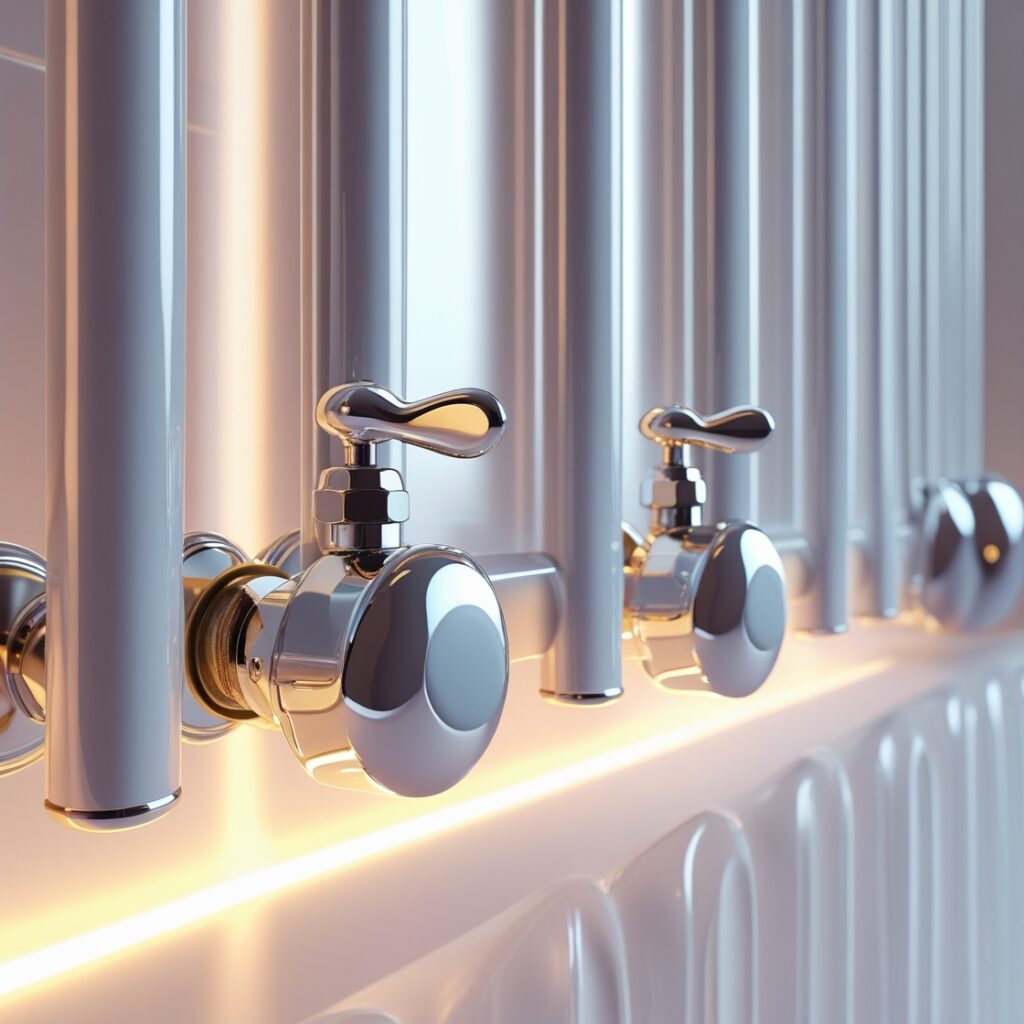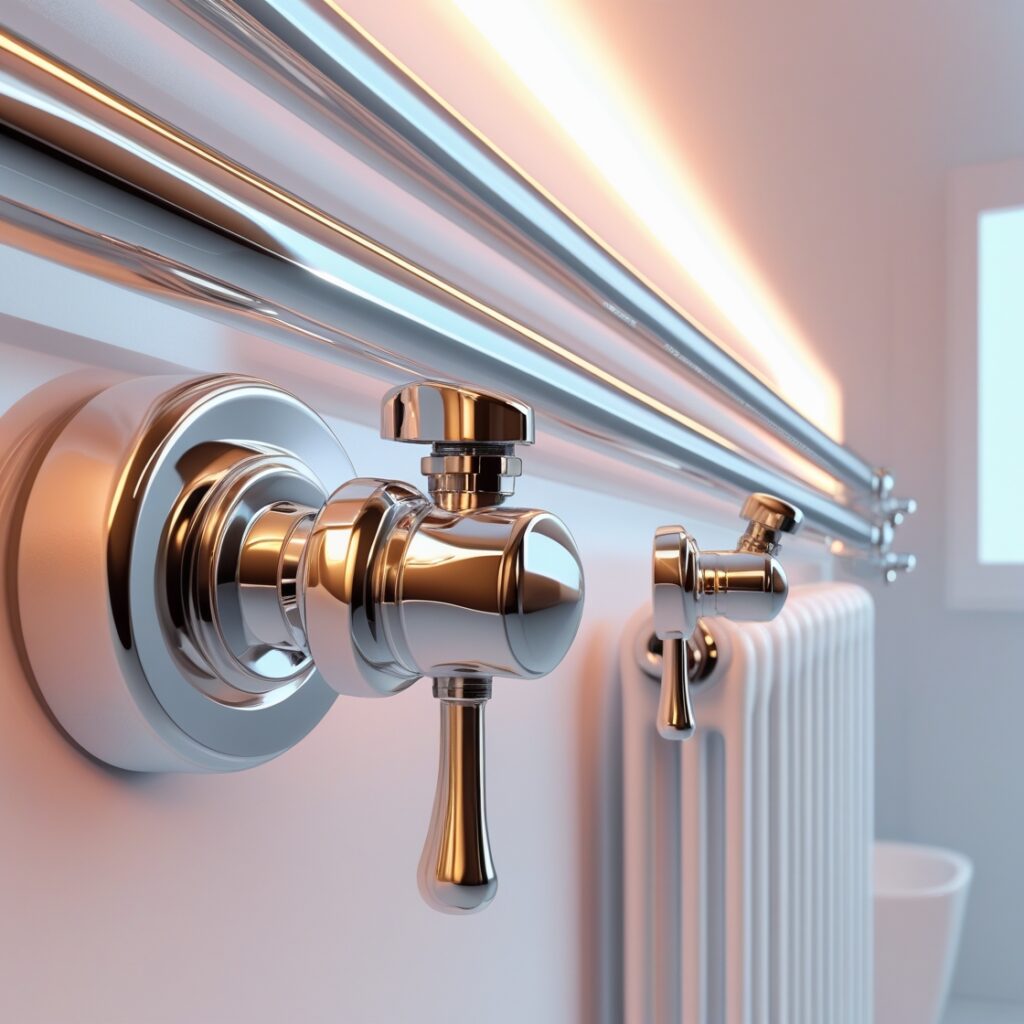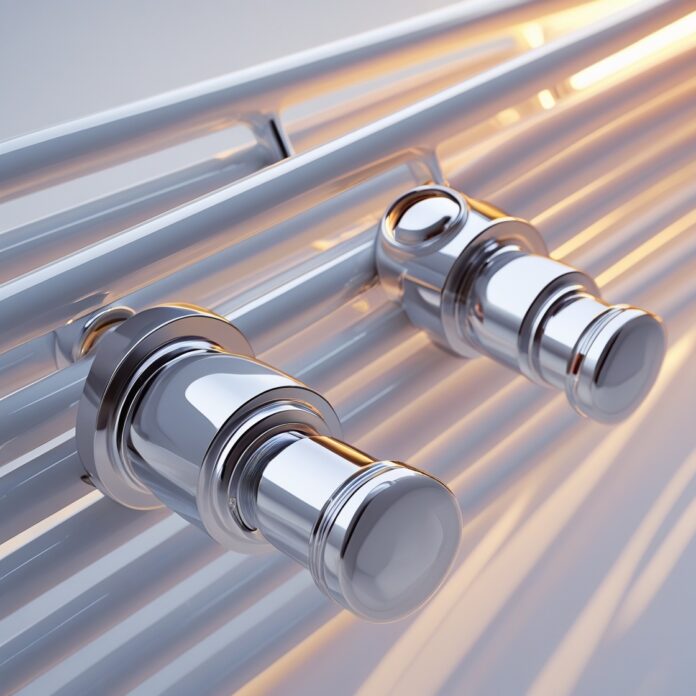Towel rail radiators set space for being one of your modern bathroom features; elegance with functionality. Besides being the reasons for your towels getting ultimately warm and dry, availing them also opens on more heating options toward catering to your bathroom area. Let’s take a glimpse at the electric towel radiator, aesthetically appealing black color by towel radiator, and heated rail original towel rail radiator. The valves are among the major components of these systems. This article discusses the uses and functions of two towel rail radiator valves, how they vary depending on the type of radiator, and the most appropriate methods for replacing them.
Understanding the Basics: What Are the Valves For?
Crucial parts of a towel rail radiator are the two valves, which regulate the flow of water (or occasionally energy in electric variants). These valves maintain the radiator’s optimal operation by controlling its temperature.
Among the two valves are:
- Inlet Valve (Flow Valve):
- controls how much water from your central heating system enters the radiator
- To provide heating, it controls the amount of hot water that enters the radiator.
2. Outlet Valve (Return Valve):
- Manages the water exiting the radiator back into the system.
- Ensures the radiator heats evenly by balancing the flow of water.
Together, these valves allow you to maintain the desired temperature and balance across your heating system.
Types of Towel Rail Radiators and Their Valves
The type of towel rail radiator you choose determines the type of valves it uses and how they function. Let’s explore the key variations:
1. Heated Towel Rail Radiators
Traditional towel rail heaters are dependent on the heating system in your home. The unit and the bathroom itself are heated by the hot water that is controlled by the valves as it passes through the pipes.
- Valves on Heated Radiators:
- These are typically manual or thermostatic.
- Manual valves require you to adjust the flow manually to achieve the desired temperature.
- Thermostatic Radiator Valves (TRVs) automatically adjust based on room temperature for efficiency.
2. Electric Towel Radiators
Electric towel radiators don’t need your central heating system to function. In addition to possibly lacking conventional valves, they employ an electric heating element. Rather, the liquid inside the radiator is heated directly by the electric component.
- Do Electric Models Have Valves?
- Some electric towel radiators may have dummy valves for aesthetic purposes, but they do not perform the same functions as those on water-based systems.
- Temperature is typically controlled by a built-in thermostat or an external control panel.
3. Dual Fuel Towel Radiators
By combining the features of an electric element and a central heating system, a dual fuel towels radiator lets you use it all year long, regardless of whether your central heating is on or off.

- Valves on Dual Fuel Systems:
- By combining the features of an electric element and a central heating system, a dual fuel towels radiator lets you use it all year long, regardless of whether your central heating is on or off.
Manual vs. Thermostatic Valves: Which One is Better?
The choice between manual and thermostatic valves depends on your needs, preferences, and budget.
- Manual Valves:
- Simple to operate and often more affordable.
- Require regular adjustments to maintain the desired temperature.
- Thermostatic Valves (TRVs):
- Automatically adjust the flow based on the temperature of the room.
- More energy-efficient, as they prevent overheating or underheating.
Since many contemporary models come in matching finishes, a thermostatic valve may improve a black towel radiator’s appearance and usefulness.
How to Adjust the Two Valves on a Towel Rail Radiator
Understanding how to properly adjust your towel rail radiator valves ensures it operates effectively. Here’s a step-by-step guide:
- Turn Off the Heating System:
- Before making adjustments, ensure the heating system is turned off to avoid burns or water leaks.
2. Locate the Inlet Valve:
- Typically located at the bottom of the radiator, this valve controls the flow of hot water into the radiator.
3. Set the Outlet Valve:
- Adjust the return valve to control the water flow exiting the radiator. A proper balance between the two ensures efficient heating.
4. Bleed the Radiator if Necessary:
- If you notice cold spots or uneven heating, bleeding the radiator can remove trapped air and improve performance.
Aesthetic and Functional Considerations

In addition to being useful, towel rail radiator valves are available in a variety of finishes and patterns. A black towel radiator and matte black valves, for instance, can improve the overall appearance of your bathroom. Another well-liked choice for people looking for a more traditional look are chrome valves.
- Angle vs. Straight Valves:
- Angle valves are ideal for pipes coming from the wall.
- Straight valves suit installations where pipes emerge from the floor.
Maintenance Tips for Towel Rail Radiator Valves
To ensure your towel rail radiator continues to perform efficiently:
- Regularly Check for Leaks:
- Inspect the valves for any signs of leakage, which can indicate wear or improper installation.
- Clean the Valves:
- Dust and grime can accumulate over time, especially in high-humidity areas like bathrooms. Clean the valves regularly to maintain their appearance and function.
- Service the Radiator Annually:
- An annual service by a professional ensures the radiator and its valves are in top condition.
- Monitor Performance:
- If your radiator isn’t heating properly, the valves may need adjustment or replacement.
Choosing the Right Towel Rail Radiator for Your Bathroom
Whether you’re upgrading your bathroom or installing a new heating system, selecting the right towel rail radiator is essential. Consider the following factors:
- Style:
- A black towel radiator adds a sleek, contemporary look, while white or chrome options provide a more traditional appearance.
- Size:
- Ensure the radiator is appropriately sized for your bathroom to provide sufficient heating.
- Fuel Type:
- Heated, electric, or dual fuel—choose the type that best suits your home and lifestyle.
Final Thoughts
Its operation is complemented by a pair of valves, which are also quite crucial in a towel rail radiator in order for your towels to be rightly warmed, making the atmosphere of your bathroom warm and welcoming. Knowing these components and giving them good maintenance is key to extending life and efficiency for any heated towel radiator, whether it be conventional, an elegant black towel radiator, or a multi-functional dual fuel one.
Consider the type of radiator you are using and the aesthetic appeal and functionality of your valves when renovating your bathroom to make it functional and visually great.



